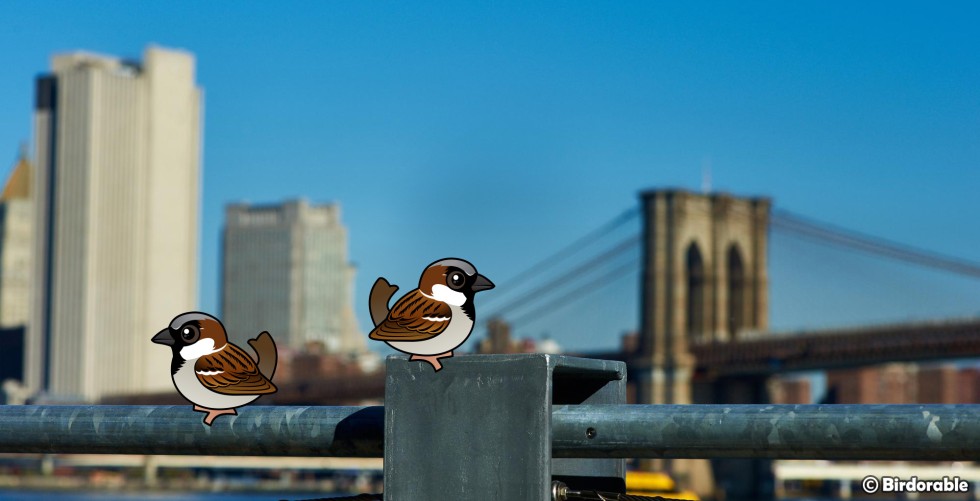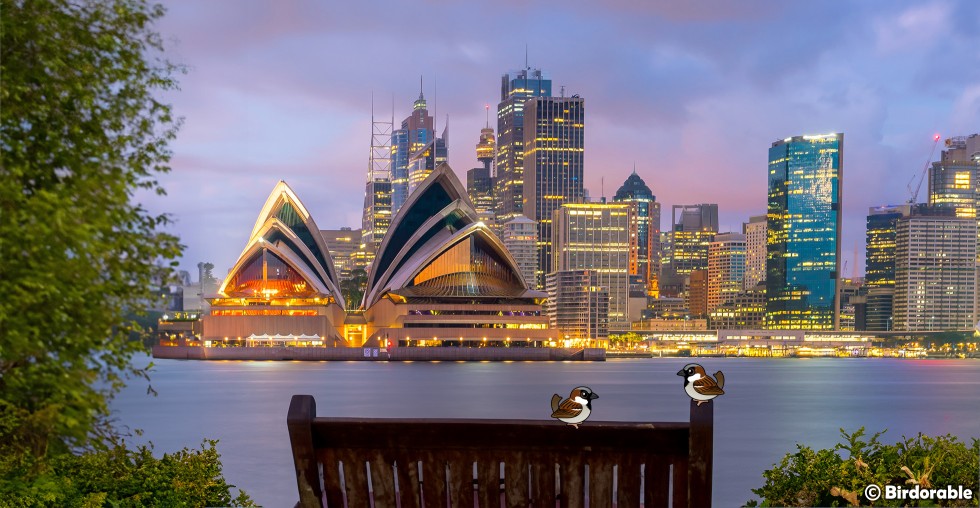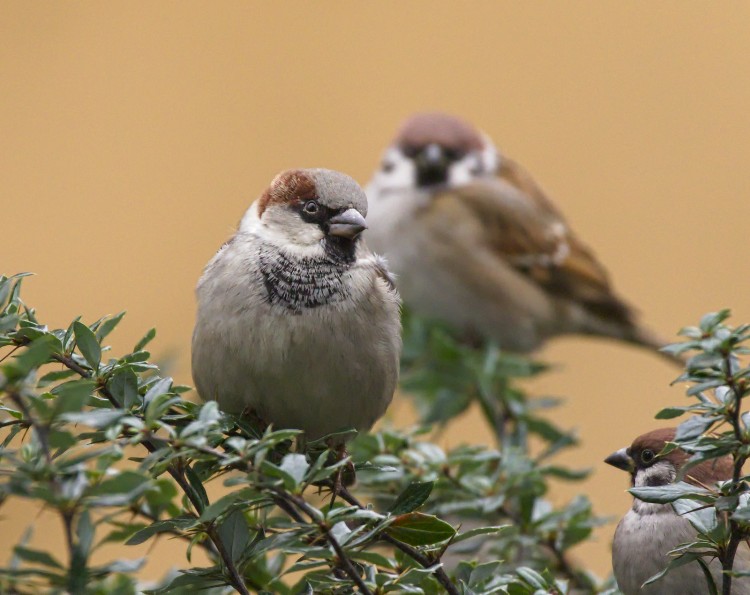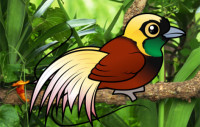From Europe to Everywhere: The House Sparrow's Remarkable Expansion

House Sparrows in Brooklyn, New York
Welcome to the world of the House Sparrow, the latest adorable addition to the Birdorable family! This small but mighty bird holds the title of the most widely distributed wild bird on Earth, and its journey alongside humans is a fascinating tale of adaptability and survival. Originally native to Europe and much of Asia, the House Sparrow has made itself at home across the globe, from the bustling streets of New York to the distant shores of New Zealand and Australia.
The introduction of the House Sparrow to the Americas did not happen by natural migration; rather, it was a direct result of human intervention. In the mid-19th century, European settlers, nostalgic for the sights and sounds of home, decided to introduce the House Sparrow to North America. The first successful introduction occurred in Brooklyn, New York, in 1851, where several pairs were released with the hope that they would control insect pests. By the end of the 19th century, they had spread as far as the Rocky Mountains, evidence of their remarkable ability to thrive in new environments. But what exactly propelled their rapid expansion across North America?
The answer lies in the urban lifestyle of the time. The 19th century saw cities teeming with horses, the primary mode of transportation, which in turn meant an abundance of spilled grain on the streets. For the opportunistic House Sparrow, this was a banquet laid out in their honor. These adaptable birds quickly learned to exploit this new food source, aiding their proliferation across the continent.

House Sparrows in Sydney, Australia
After its introduction to North America in the mid-19th century, the House Sparrow's journey didn't stop there. These birds have an uncanny ability to thrive in urban and rural areas alike, making the most of the opportunities provided by human alterations to the landscape. This adaptability has facilitated their spread to other regions, including sub-Saharan Africa, Australia, New Zealand, and various islands around the globe.
In sub-Saharan Africa, for example, House Sparrows have thrived by exploiting grain stores and feeding on the scraps of human settlements. Their presence in these areas is often seen as an indicator of human impact on natural environments, as they typically flourish in areas where traditional bird species might struggle due to habitat loss and changes in land use.
But the House Sparrow's adaptability isn't just about exploiting food sources. These birds have a an exceptional capacity to live in close quarters with humans, thriving in urban areas where other species might struggle. From the eaves of houses to the nooks of buildings, House Sparrows make their nests, always staying close to the hustle and bustle of human activity. Their cheerful chirping and social nature have made them a familiar and often beloved presence in cities and towns around the world.

House Sparrows by hedera.baltica (CC BY-SA 2.0 DEED)
What about Europe, the birthplace of the House Sparrow? Despite being native to this region, House Sparrows in Europe have faced significant challenges in recent decades, leading to a notable decline in their populations in many areas. This decline is attributed to a combination of factors, including urbanization, loss of traditional nesting sites due to modern building renovations, reduced insect food sources for chicks due to increased pesticide use, and competition for nesting spaces. Urbanization, in particular, has led to the loss of green spaces and gardens where sparrows once thrived, feeding on insects and seeds. In some cities, conservation efforts are underway to halt their decline, focusing on creating sparrow-friendly environments by preserving green spaces, planting native vegetation, and installing nest boxes to compensate for the loss of natural nesting sites.
It's intriguing that while House Sparrows flourish in human-altered landscapes outside of Europe, their populations face challenges within their native European habitats, highlighting the complex interplay between wildlife, humans, and changing environments.
Do you have House Sparrows visiting your yard or nearby areas? How do they adapt to the environment where you live? Share your observations and experiences with these feathered voyagers and join us in appreciating the global journey of the House Sparrow.













Comments
Leave a comment
Thank you!